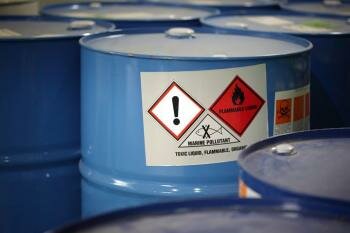SAICM Brief Explores Costing Tools for Sound Chemicals Management
By IISD's SDG Knowledge Hub, October 12, 2020
In a new policy brief, the Strategic Approach to International Chemicals Management (SAICM) shows how governments are using economic tools to balance the benefits of chemicals with their socio-economic, health, and environmental costs.
The brief titled, ‘Role of economic instruments for the sound management of chemicals and waste,’ calls for greater understanding of cost recovery mechanisms and economic policy instruments as potential tools to mobilize resources and help countries achieve sound chemicals and waste management.
The authors explain that some external costs arising from the unsound management of chemicals and waste are not accounted for in the price of goods and products. With the global chemicals industry (including pharmaceuticals) worth approximately USD 5.7 trillion and expected to double by 2030, many have called for more action to internalize these costs throughout the chemicals value chain.
Cost recovery mechanisms and economic policy instruments aim to provide signals and incentives to stimulate behavioral change across the value chain. They can bring about benefits including:
- internalizing and reflecting the true cost of the production, consumption, and final disposal of goods;
- creating an incentive to not pollute or create waste;
- providing revenues so countries can, for example: fund national chemical authorities and develop infrastructure for waste collection, sorting, and recycling;
- responding to increased consumer demand for sustainability and accountability;
- creating a level playing field so producers follow the same rules and standards; and
- contributing to national commitments towards the SDGs.
SDG 3 calls for reducing illness and deaths linked to chemical exposure (SDG target 3.9), SDG 12 is ‘ensure sustainable consumption and production patterns,’ and three other Goals (SDGs 6, 14, and 15) address the need to reduce pollution as a key driver of biodiversity loss.
The brief reports that governments are using cost recovery measures and economic instruments to generate additional resources, which on chemicals management include taxes, fees, tradeable permits, and subsidies. On waste, targeted tools include: extended producer responsibility (EPR); deposit refund schemes to discourage improper disposal; and pay-as-you-throw, which supports waste collection activities.
Prerequisites for governments to use cost recovery mechanisms and economic policy instruments, the authors say, may include:
- political will and national vision;
- ambitious targets;
- public-private collaboration;
- financial resources, including seed funding to institutionalize a policy framework for chemical safety;
- a flexible legal foundation based on sound data and design;
- designated institutional body;
- third-party verification of products;
- revenues from cost recovery fees that go toward ensuring chemicals safety and waste management; and
- monitoring framework to track progress.
The Beyond 2020 framework is currently under deliberation, and outcomes are expected at the fifth session of the International Conference on Chemicals Management (ICCM5) in 2021. To secure financing beyond 2020, the brief describes next steps such as to conduct research drawing on lessons from the “biodiversity incentives” of the Convention on Biological Diversity (CBD) and the World Bank’s carbon pricing programme. On providing capacity support, the brief suggests collecting best practices at the national level to create a “living document” for inclusion in the SAICM knowledge management platform to guide national action. On developing policy and tracking progress, the brief mentions developing: a global cost internalization programme; relevant indicators for Beyond 2020 to monitor use of mechanisms and instruments; and a common harmonized framework to improve tracking, reporting and assessment of finance flows.
The brief draws from and complements an earlier SAICM document, ‘Review of cost recovery mechanisms and other economic instruments for financing of the sound management of chemicals and waste,’ which was prepared in advance of ICCM4. [Publication: Role of economic instruments for the sound management of chemicals and waste]


